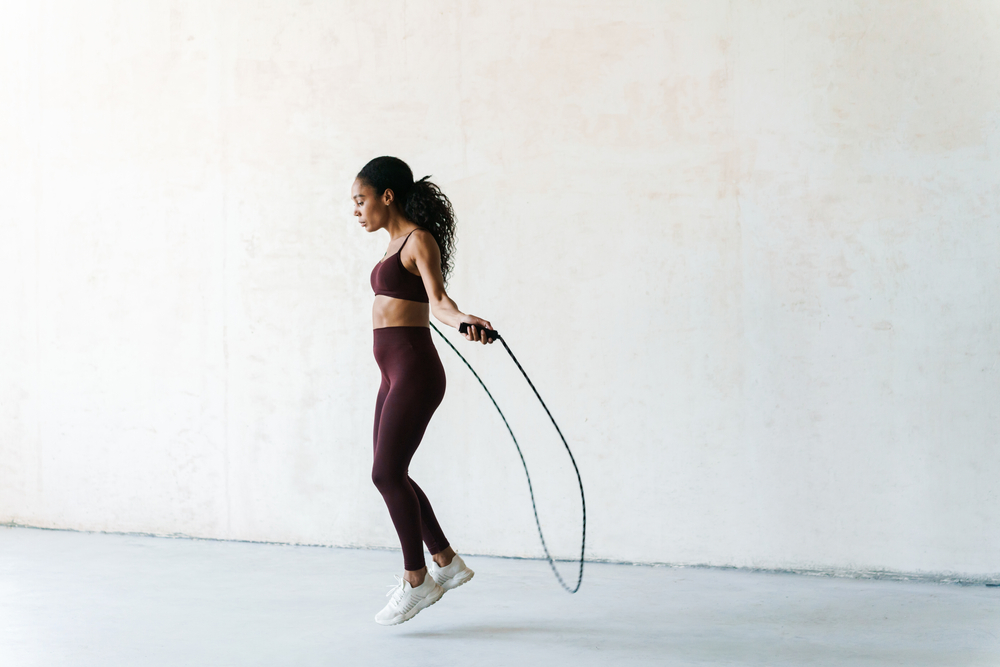HIIT rocked the fitness world for a number of beneficial reasons from time efficiency to highly effective calorie burning and we’re not here to bad-mouth this favoured form of training. We’re unravelling the pros, the cons and how to structure HIIT into your training without it becoming too taxing on the body.
How Does A Workout Qualify As HIIT?
“High-Intensity Interval Training, overwise known as HIIT, is when your workout is split into short intense bursts of exercise followed by a period of rest, usually using the following times, of; 20s on, 10s off; 30s on, 30s off: or 45s on, 15s off, with each session usually lasting between 20-45 minutes.”
-David Wiener, Training & Nutrition Specialist at Freeletics
The Benefits Are Endless
“Benefits of this type of training include improving stamina and strength, burning a high number of calories in a short space of time, increasing metabolism, and lowering blood pressure and blood sugar. Furthermore, it can help reduce stress and improve mental health. HIIT is also not specific to cardio or strength training, in fact, you can combine both forms of exercise in this workout, alternating between exercises such as burpees with squats or high knees and press-ups. Evidently, HIIT also offers the opportunity for a full-body workout, targeting all different muscle groups. Furthermore, you can absolutely carry out a HIIT workout anyway without the need for any equipment.”
-Emma Bord, PT & Fitness Specialist
It’s Time Efficient
“Studies into the benefits of short HIIT workouts have found that as little as seven minutes of intense HIIT exercise is enough to get the fitness benefits. These shorter, more intense workouts are appealing to many, as it is much easier to work at max effort for a shorter time and the benefits remain largely the same. Shorter workouts are undoubtedly easier to work into a busy schedule and the multiple benefits this style of training offers mean that in a short session, you can work on your fitness levels and enhance your strength and power.
It is scientifically proven that a 27-minute session of HIIT three times a week (81 minutes total) can produce the same anaerobic and aerobic benefits as 60 minutes of aerobic cardio training five times per week (300 minutes total). So, if you’re looking to really push yourself and up the intensity of your workouts to be able to fit in a shorter amount of time exercising, HIIT is for you!”
-David Wiener, Training & Nutrition Specialist at Freeletics
You Get More Bang For Your Buck
“Whilst cardiovascular exercise is incredible for weight loss and does absolute wonders for your health in general, HIIT training burns more calories during and after a workout than continuous cardiovascular training. This is because the bursts of increased intensity enhance your calorie expenditure and ups the number of total calories burned, aiding in better body composition. This also means that you burn more calories after you finish exercising (usually about two hours after), adding to the greater calorie burn. Exercise post-oxygen consumption (EPOC) is the body’s natural ability to return to homeostasis after exercise. With HIIT, the total calories burned is greater in EPOC than with continuous low-intensity cardio exercise.” -David Wiener, Training and Nutrition Specialist at Freeletics
“Several research studies have focused on HIIT and the effect it has on our metabolic rate, finding that HIIT has the incredible ability to increase metabolic rate for hours after you’ve finished exercising, which means you are burning more calories following a HIIT workout.”
-Ryan Atkin, Head Coach at Real World Results
Who Should Be Avoiding HIIT?
“Pregnant and newly post-natal ladies will want to avoid pushing their heart rate as high as HIIT works and those just starting out on a fitness journey may want to build up some strength and fitness before going in for this intense form of training. It is always important for anyone with any medical condition to discuss this form of training with a professional before getting started to ensure it is safe for them to do so.”
-Emma Bord, PT & Fitness Specialist
How Much Is Too Much?
“Like most things in life, balance is key and because of the intense nature of HIIT it is not recommended to do these kinds of sessions more than 4 times a week in order for your muscles can recover and to avoid injury.”
-Emma Bord, PT & Fitness Specialist
Things To Consider If You’re A Fan Of HIIT
“HIIT workouts involve high-impact exercises such as jumping, sprinting, and plyometrics which can put a lot of stress on your joints and muscles. Over time, this can lead to overuse injuries such as tendonitis, stress fractures, and muscle strains. If you’re prone to injuries or are coming back from an injury, HIIT might not be quite right for you and could do more damage than good.
With stress and anxiety levels at an all-time high, HIIT workouts can keep your body in a constant high state of stress and intensely impact your nervous system. This can lead to additional stress on the body and an increase in cortisol, which can mean an exacerbation of anxiety and stress. Being able to balance exercise and activities that actively lower the stress hormones and soothe our nervous systems, such as yoga, meditation, or gentle walking, can be more effective than HIIT from time to time.”
-Ryan Atkin, Head Coach at Real World Results
Striking The Balance
“A well-balanced exercise routine is a combination of strength training, cardio and on a more basic level, stretching and balance training. You don’t need to be incorporating cardio, strength training, HIIT, flexibility training and balance training all in the same day as this would be impossible. However, incorporating these elements into your regular routine will make you a fitness pro!”
-David Wiener, Training and Nutrition Specialist at Freeletics
“It’s a great idea to combine HIIT with other forms of activity such as spinning, swimming, boxing or indeed power walking or running, for a well-rounded, interesting and effective workout plan.”
-Emma Bord, PT & Fitness Specialist
Learn more from these HIIT experts…
David Wiener, Training and Nutrition Specialist at Freeletics
Ryan Atkin, Head Coach at Real World Results
Emma Bord, PT & Fitness Specialist














